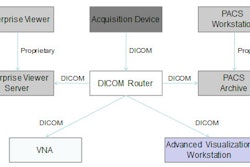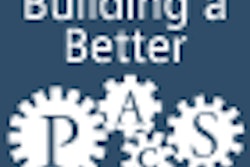Does a large radiology department consisting entirely of non-native English language speakers improve productivity by using a conventional speech recognition system? It does at Aga Khan University Hospital in Karachi, Pakistan.
Radiologists at the 500-bed hospital compared turnaround times (TATs) for various types of radiology exams over two periods: one in which conventional dictation methods were used, and the other after implementation of a speech recognition system. In every category, when speech recognition technology was used, radiology report turnaround times improved. Data were reported in a letter published in the April issue of the American Journal of Roentgenology (2011, Vol. 196:4, p.W485).
Dr. Waseem Akhtar led a team that evaluated TAT for reports prepared using conventional dictation and transcription methods from July 2007 through July 2008, as well as TAT after radiologists had adjusted to using a speech recognition system (PowerScribe, Nuance Communications) from June 2009 through May 2010. A total of 61,833 and 73,830 reports, respectively, were analyzed. The radiologists defined compliance as providing availability of a signed radiology report within 24 hours.
The greatest improvement in compliance was for MRI reports (20.4%), followed by ultrasound reports (12.6%) and fluoroscopy reports (11.6%). The least improvement was for nuclear medicine reports (4.3%); however, nuclear medicine also had the highest TAT compliance percentage for both time periods, at 93.4% before voice recognition and 97.7% after the software. Compliance improvements for interventional radiology, CT, and vascular exams ranged from 6.5% to 7.1%.
In email correspondence with AuntMinnie.com, Akhtar, an assistant professor of radiology, said that future analyses would evaluate a shorter, six-hour turnaround time, as well as the turnaround time for stat exams. The greatest improvements from use of the speech recognition technology observed anecdotally have been for stat exams, with improvements being "significant," he noted.
All 30 members of the hospital's radiology faculty use the speech recognition system, and more than 90% of the time they do their own editing. Transcriptionists who have become adept report editors are available to assist when needed.
More time was needed for the system to learn the accents and speech patterns of its users, none of whom were native language English speakers. But the radiology department had planned for gradual adoption, a longer transition period, and more training for the system.
"Integrating speech recognition software to our radiology information system and PACS has improved workflow in our busy department," Akhtar wrote. "We have seen significant improvements."



















